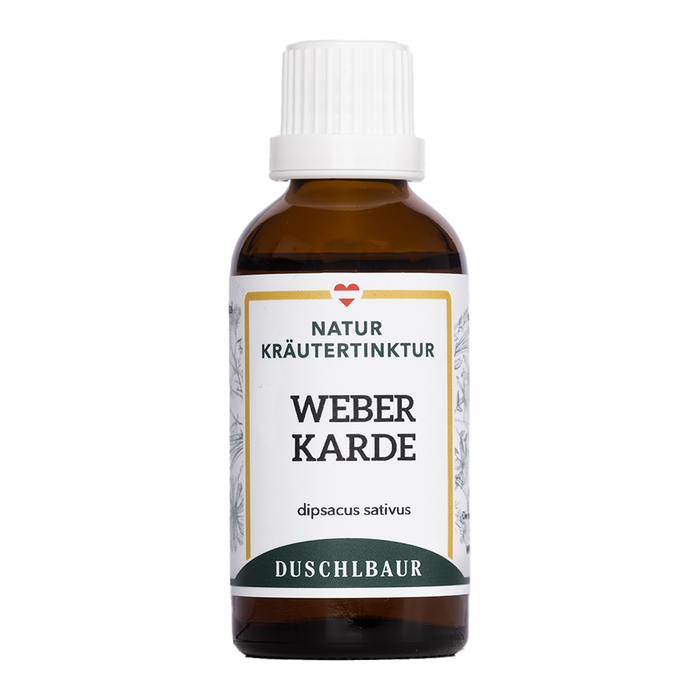The natural ingredients of theTeasel tincture dropsare:Water, alcohol, teasel.
We use the root to produce these very valuable drops.
Rainwater and dew collect in their twisted leaf axils, which birds use as a source of drinking water.
In the early Iron Age, the faded flower heads were used to roughen and seal finished woven cloth. A picture from the 16th century shows carders at work. The workers pierce the seed heads of the weaver's card lengthwise and place them on rotating rods. This construction gently roughens the fabric to be processed. Billiard table covers are still processed in this way today. Until the 20th century, faded card heads were used to comb unspun wool.
In its first year, the teasel forms a basal rosette. The leaves are light green and unarmed. The soft edges are slightly wavy or toothed. In the second year, a stem up to 2 meters tall sprouts. Two large leaves develop directly on the stem, the point of attachment of which serves as a catchment for rainwater. There are two theories regarding the purpose of these "catchment basins." Perhaps they are intended to protect the flowers from crawling insect pests. It is also possible that the plant feeds on drowned insects.
The flowers are initially green, then begin to bloom from the center, turning white to purple. The flowering zone moves simultaneously upwards and downwards. Later, these develop into the spiky flower heads described above.







